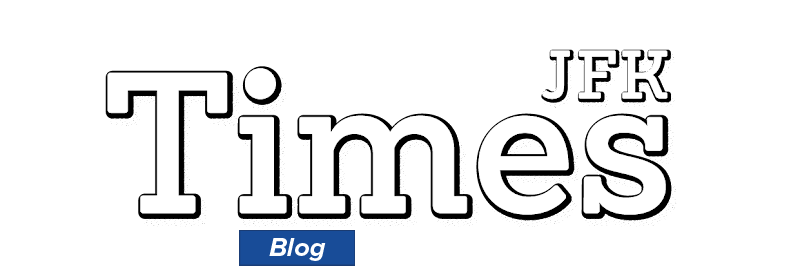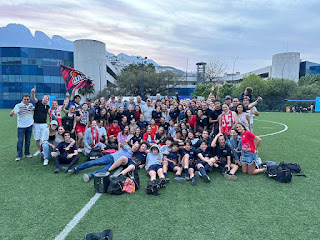Lo que significa ser parte de una comunidad, Challenge 2020
Shannon Lewis
JFK Alumni
En 2011, fui invitada a tomar parte en un proyecto internacional conocido como Challenge 2020. Su nombre describe su intención: teníamos que encontrar una solución para uno de los 20 mayores problemas mundiales (según las Naciones Unidas) antes del año 2020. Simple, ¿no?
Cuando primero participé en Challenge 2020 era un proyecto específico. Por un año, nosotros (un grupo de 5-6 voluntarios en el Kennedy) íbamos a conectar con otro grupo de voluntarios en una escuela en Estados Unidos para intentar crear e implementar una solución para el problema mundial que fuimos asignados: la pobreza urbana. Siendo dos grupos distintos, con comunidades que tenían necesidades distintas, el punto era acabar con una solución creativa e internacional. En lo que quedamos nosotros fue la idea de conectar los recursos de nuestra comunidad en la escuela con una comunidad local. Así empezamos nuestra conexión con El Obraje.
Inicialmente, nos enfocamos en construcción. Muchas de los casas en esta comunidad estaban dilapidadas o parcialmente construidas. El plan fue presentarnos en El Obraje, hacer varias encuestas para entender necesidades y prioridades, y empezar con las áreas de mayor impacto.
Inmediatamente, las cosas se pusieron complicadas. No es fácil definir qué proyectos son más importantes. Algunas casas no tenían techo, otras no tenían baño. ¿Cómo decides dónde empezar? La idea de empezar con hogares era bonita, pero tampoco teníamos las habilidades necesarias. Podíamos reclutar material de construcción con campañas en la escuela, pero ninguno de nosotros sabíamos construir paredes o hacer funcionar la electricidad. Y la construcción toma tiempo – no es algo que puedes hacer de un día al otro. Encima de todo eso, éramos un grupo de adolescentes ajenos, cuya única conexión a la comunidad de El Obraje era geográfica. ¿Por qué nos iban a tener confianza?
Necesitábamos reformular, hacer algo dentro de nuestra habilidad, que podíamos empezar inmediatamente y que nos daba chance de empezar a generar confianza. Nos decidimos enfocar en crear un centro comunitario para los niños. No era un centro físico, sino una garantía que cada dos semanas, íbamos a traer material y actividades los sábados en la mañana. Cualquier niño que quería, podía participar.
Al principio, muy pocos niños participaron - los que participaron eran tímidos, nos mantuvieron a una distancia. Llevamos todo tipo de actividades: origami, pintura, futbol. El punto, más que nada, era crear un espacio social. Entre más semanas íbamos, más niños empezaron a participar y con más entusiasmo. En diciembre, pusimos una posada, algo que en eventualmente se convertiría en una tradición anual para Challenge 2020.
Al fin del año escolar, tuvimos una última llamada con los alumnos en Estado Unidos. Les contamos sobre nuestras actividades con los niños y ellos nos contaron sobre sus colectas de alimentos enlatados. Colgamos la llamada y, técnicamente, llegamos al fin de Challenge 2020. Era un proyecto anual. Si queríamos participar otra vez el próximo año, sería con otro de los 20 problemas mundiales, con otra escuela. Pero nuestro proyecto con El Obraje no había llegado al fin. Apenas íbamos empezando. Para nosotros, Challenge 2020 significaba algo específico: representaba la conexión entre nuestra comunidad y la de El Obraje.
Desde 2011, mucho ha cambiado. El centro comunitario continuó, una parte del proyecto con la que yo mantuve conexión desde noveno hasta graduarme. Pero también logramos empezar con los proyectos de construcción que habíamos propuesto inicialmente. Pintamos las paredes del kínder. Construimos una biblioteca junto a la iglesia. Empezamos a remodelar casas.
Escribiendo esto, me di cuenta que Challenge 2020 ha existido por más de una década. Los niños que yo conocí en 2011 ya no son niños. Los alumnos que continuaron el proyecto cuando me gradué son adultos también. Hay proyectos que solo sobreviven mientras el grupo que los creó participan en ellos. Challenge 2020 no depende en una persona específica (aunque Vero definitivamente merece, mínimo, 60% del crédito por mantenerlo). No hay un grupo que puede desaparecer, y con ellos, el proyecto. El grupo es la comunidad. Y mientras exista una comunidad en el Kennedy con deseo de hacer este mundo un mejor lugar para vivir, existe Challenge 2020.
-------------------------------------------------
By Shannon Lewis, JFK Alumni
In 2011, I was invited to take part in an international project known as Challenge 2020. Its name describes its intention: we had to find a solution to one of the 20 biggest world problems (according to the United Nations) before the year 2020. Simple, what? No?
When I first participated in Challenge 2020 it was a specific project. For a year, we (a group of 5-6 volunteers at Kennedy) were going to connect with another group of volunteers at a school in the United States to try to create and implement a solution to the global problem we were assigned to: urban poverty. Being two different groups, with communities that had different needs, the point was to come up with a creative and international solution. What we were left with was the idea of connecting the resources of our community at the school with a local community. Thus we began our connection with El Obraje.
Initially, we focused on construction. Many of the houses in this community were dilapidated or partially built. The plan was to introduce ourselves to El Obraje, do several surveys to understand needs and priorities, and start with the areas of greatest impact.
Immediately, things got complicated. It is not easy to define which projects are most important. Some houses did not have a roof, others did not have a bathroom. How do you decide where to start? The idea ofstarting with homes was nice, but we didn't have the necessary skills either. We could recruit building materials with drives at school, but none of us knew how to build walls or run electricity. And construction takes time – it's not something you can do overnight. On top of all that, we were a group of oblivious teenagers, whose only connection to the El Obraje community was geographical. Why would they trust us?
We needed to reframe, to do something within our ability, that we could start immediately, and that gave us a chance to start building trust. We decided to focus on creating a community center for the children. It was not a physical center, but a guarantee that every two weeks, we would bring materials and activities on Saturday mornings. Any child who wanted to could participate.
At first, very few children participated - those who participated were shy, they kept us at a distance. We carry all kinds of activities: origami, painting, soccer. The point, more than anything, was to create a social space. The more weeks we went, the more children began to participate and with more enthusiasm. In December, we put on a posada, something that would eventually become an annual tradition for Challenge 2020.
At the end of the school year, we had one last call with the students in the United States. We told them about our activities with the children and they told us about their canned food drives. We hung up the call and, technically, we reached the end of Challenge 2020. It was an annual project. If we wanted to participate again next year, it would be with another of the 20 world problems, with another school. But our project with El Obraje had not come to an end. We were just getting started. For us, Challenge 2020 meant something specific: it represented the connection between our community and that of El Obraje.
Since 2011, a lot has changed. The community center continued, a part of the project that I stayed connected to from ninth grade until graduation. But we also managed to get started on the construction projects that we had initially proposed. We painted the walls of the kindergarten. We built a library next to the church. We started remodeling houses.
Writing this, I realized that Challenge 2020 has been around for over a decade. The children I met in 2011 are no longer children. The students who continued the project when I graduated are adults too. There are projects that only survive as long as the group that created them participates in them. Challenge 2020 does not depend on a specific person (although Vero definitely deserves, at least, 60% of the credit for maintaining it). There is no group that can disappear, and with them, the project. The group is the community. And as long as there is a Kennedy community with a desire to make this world a better place to live, there is Challenge 2020.

.jpeg)



Comments
Post a Comment